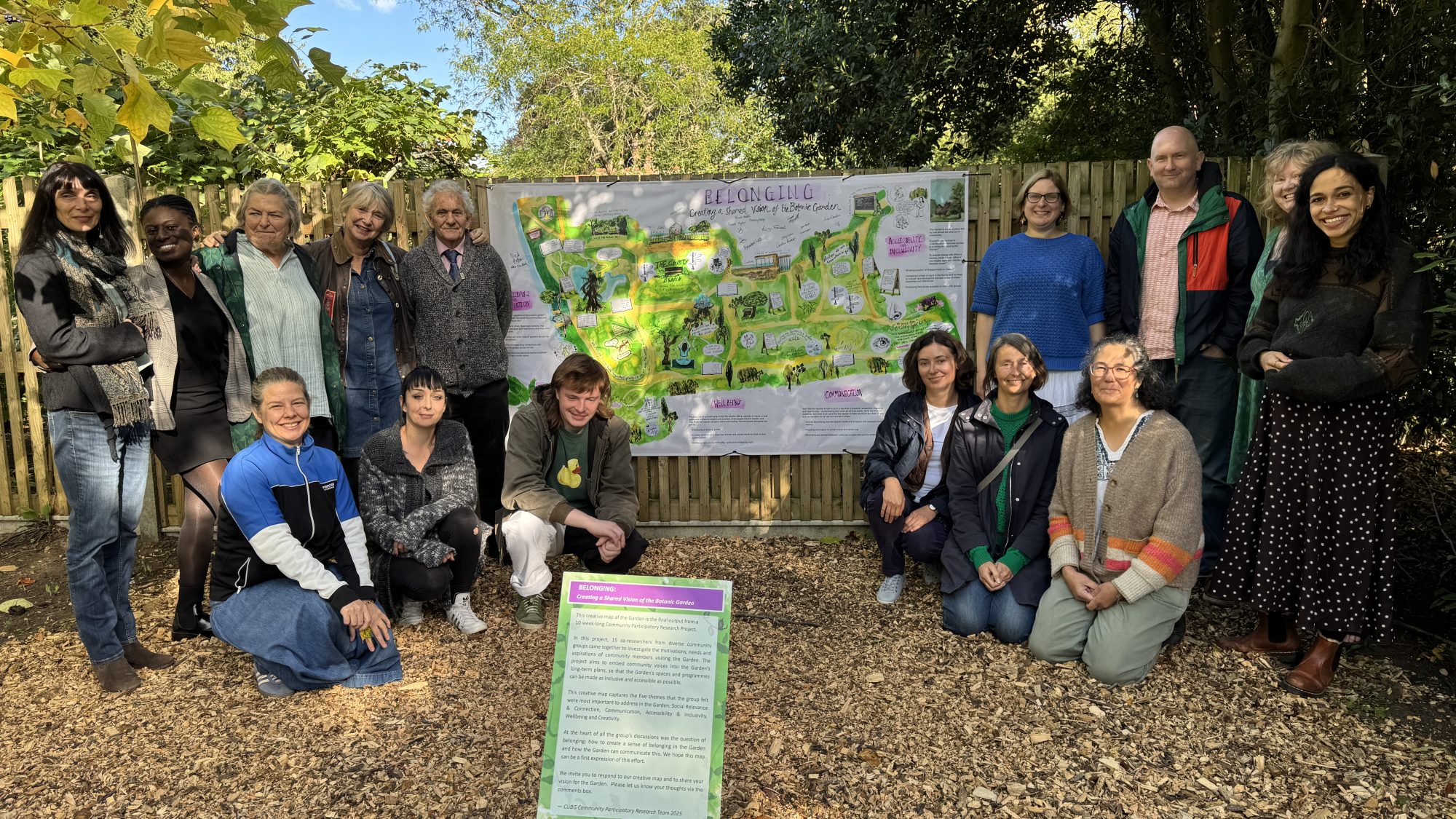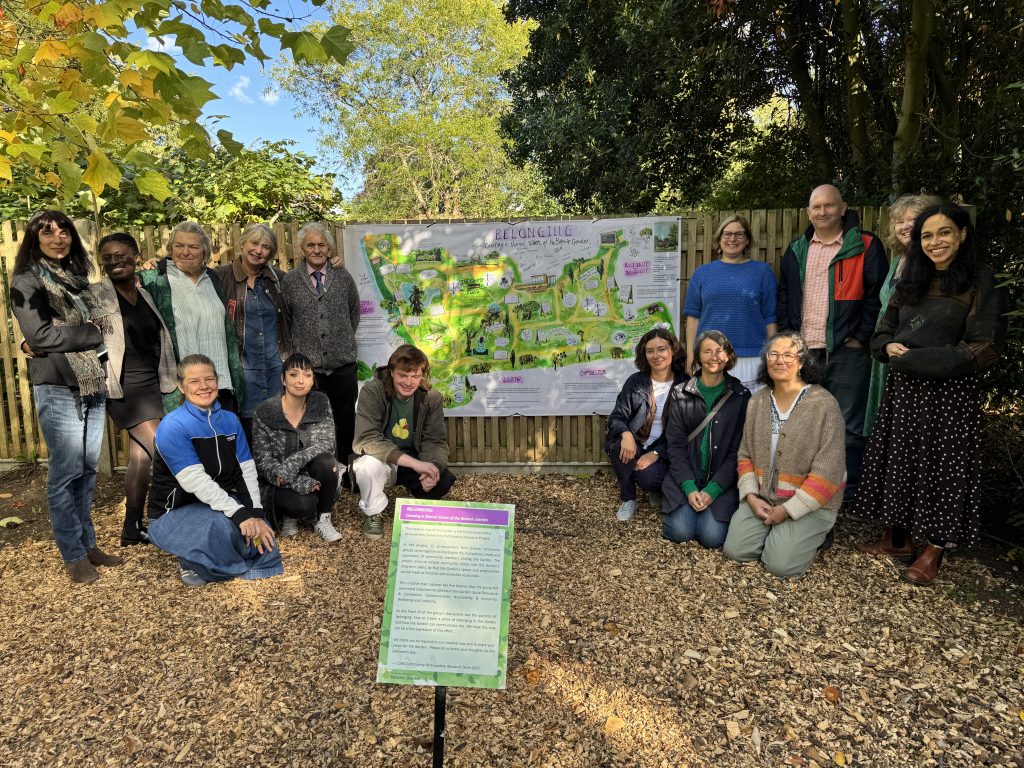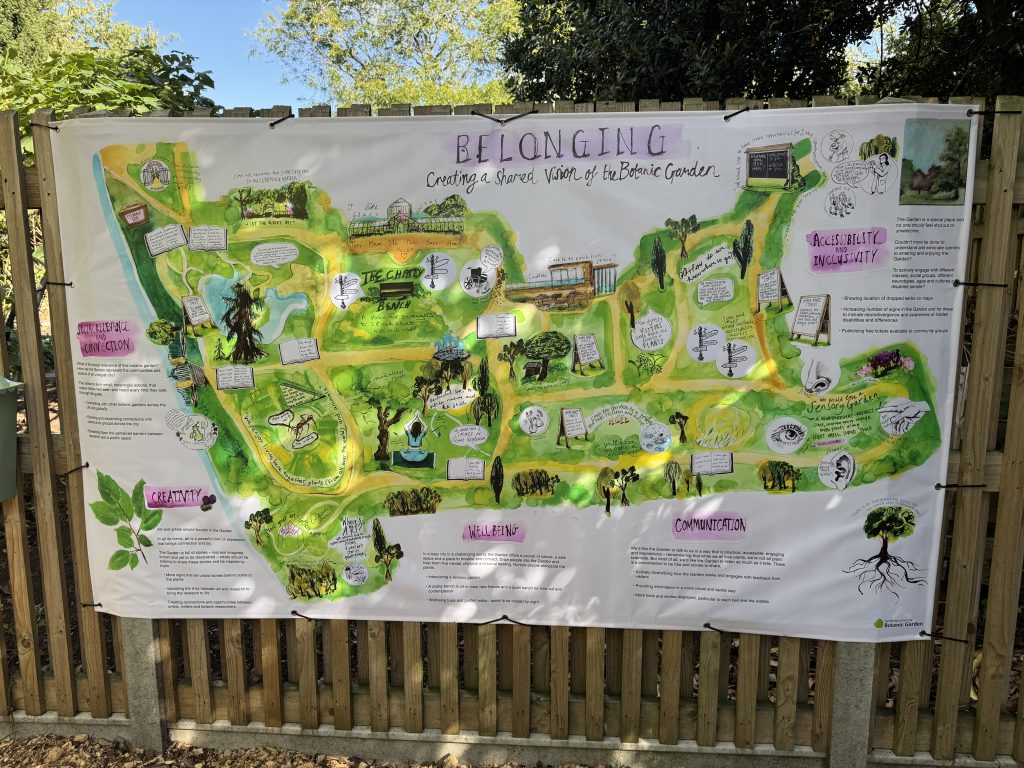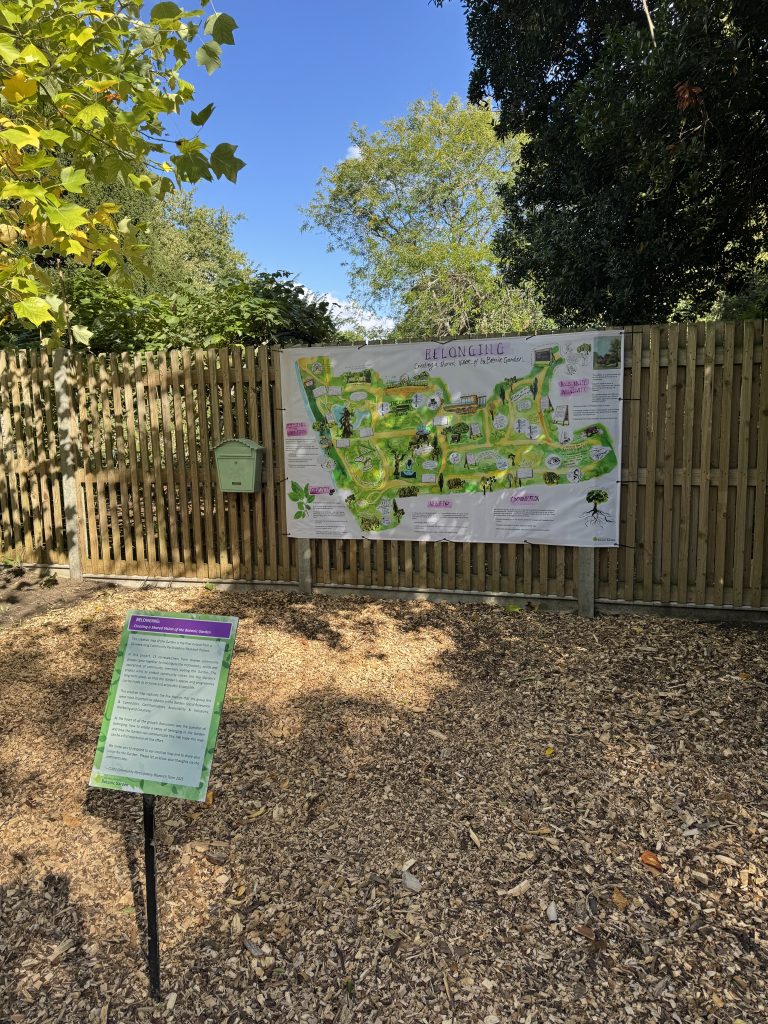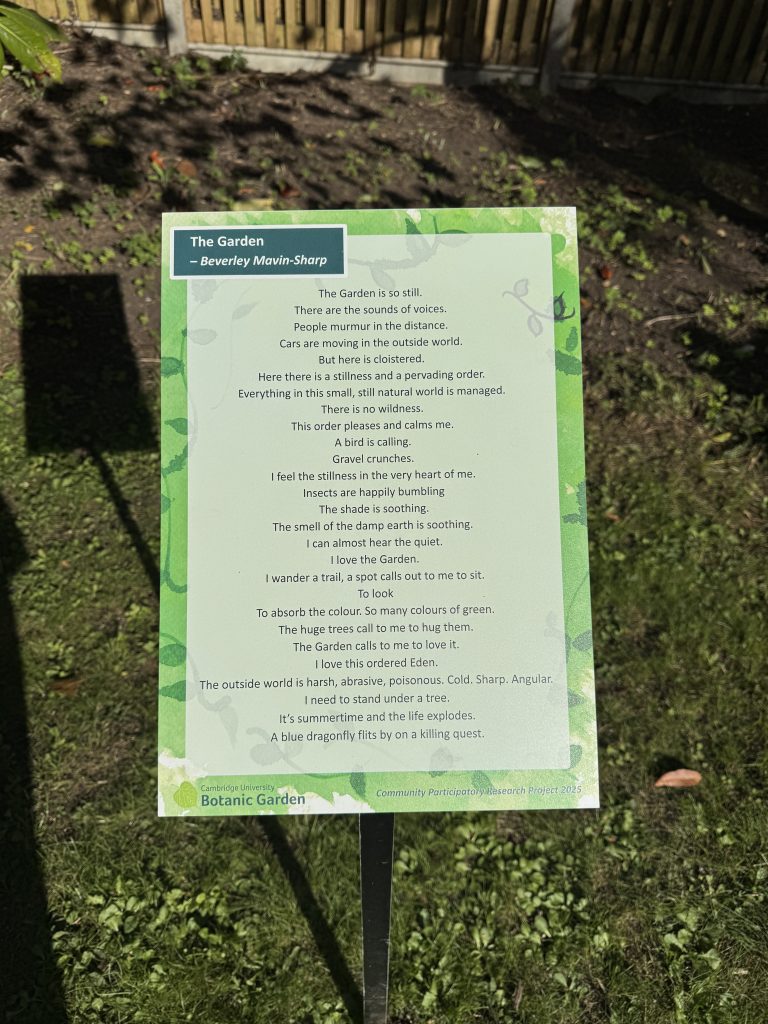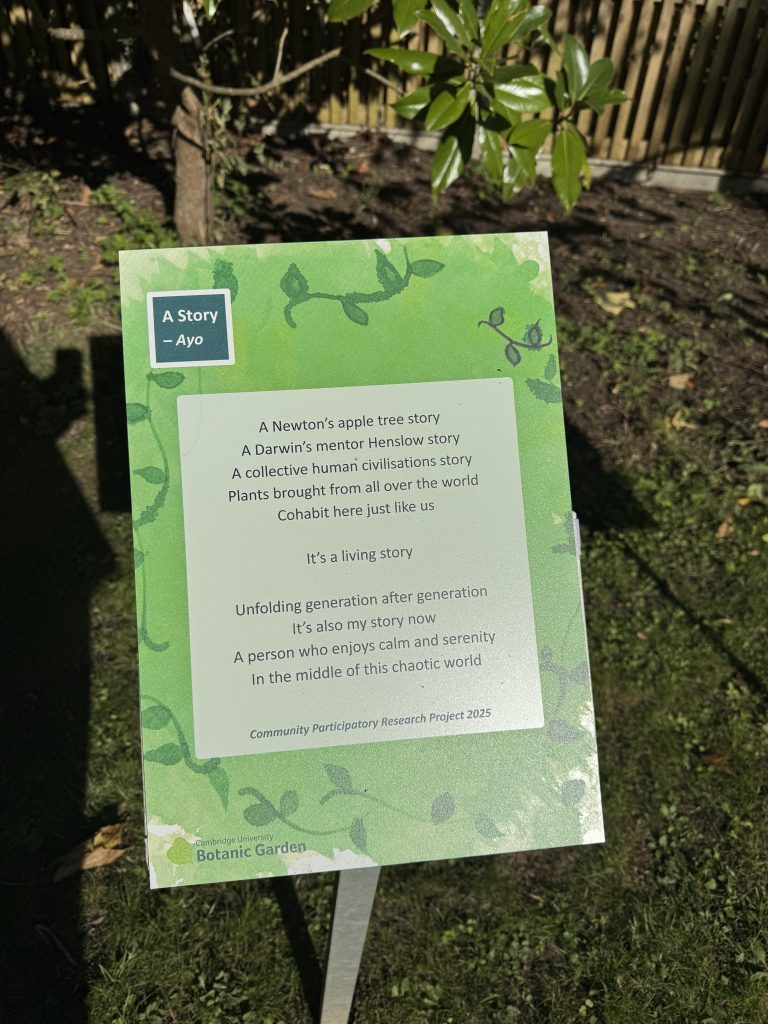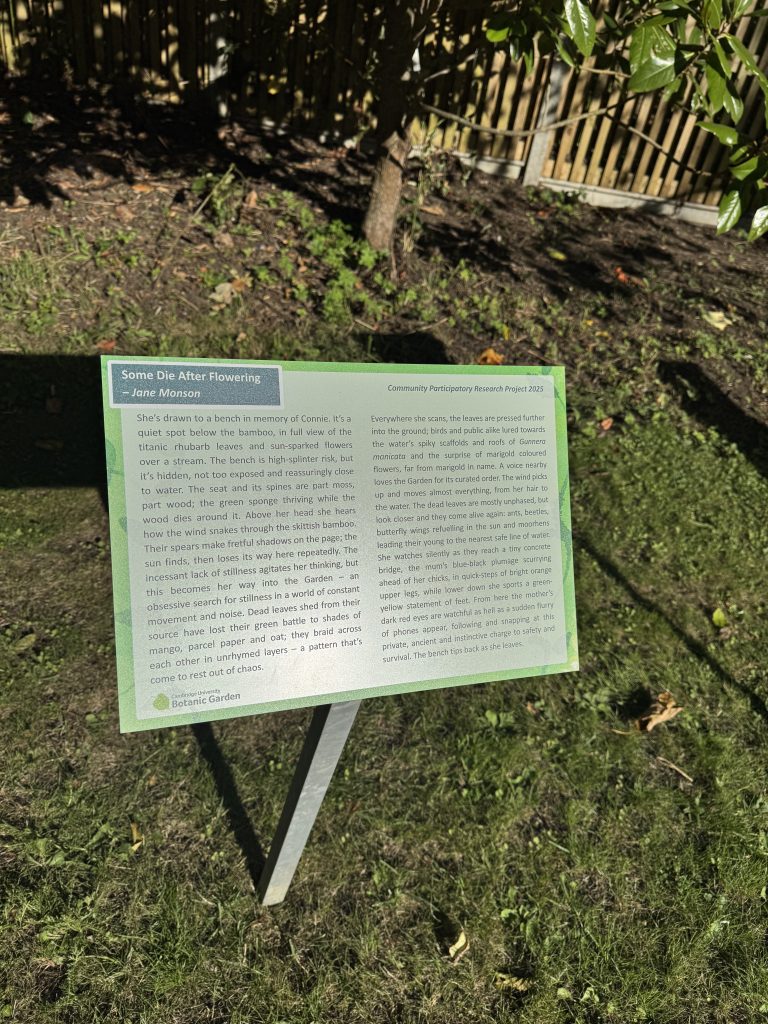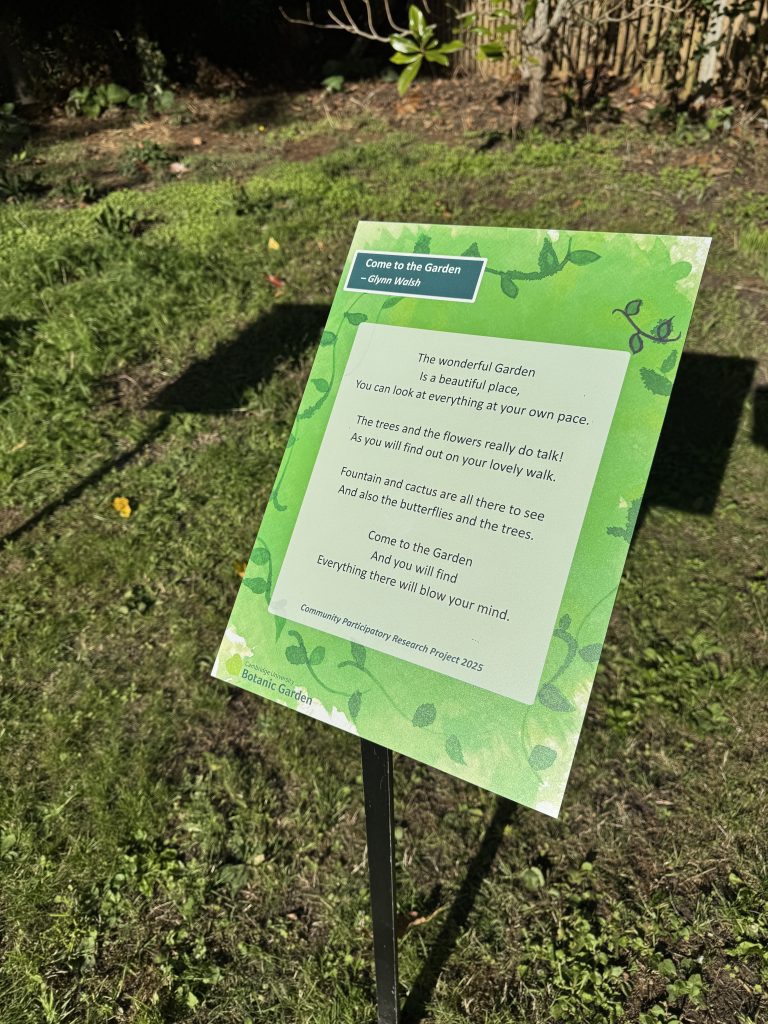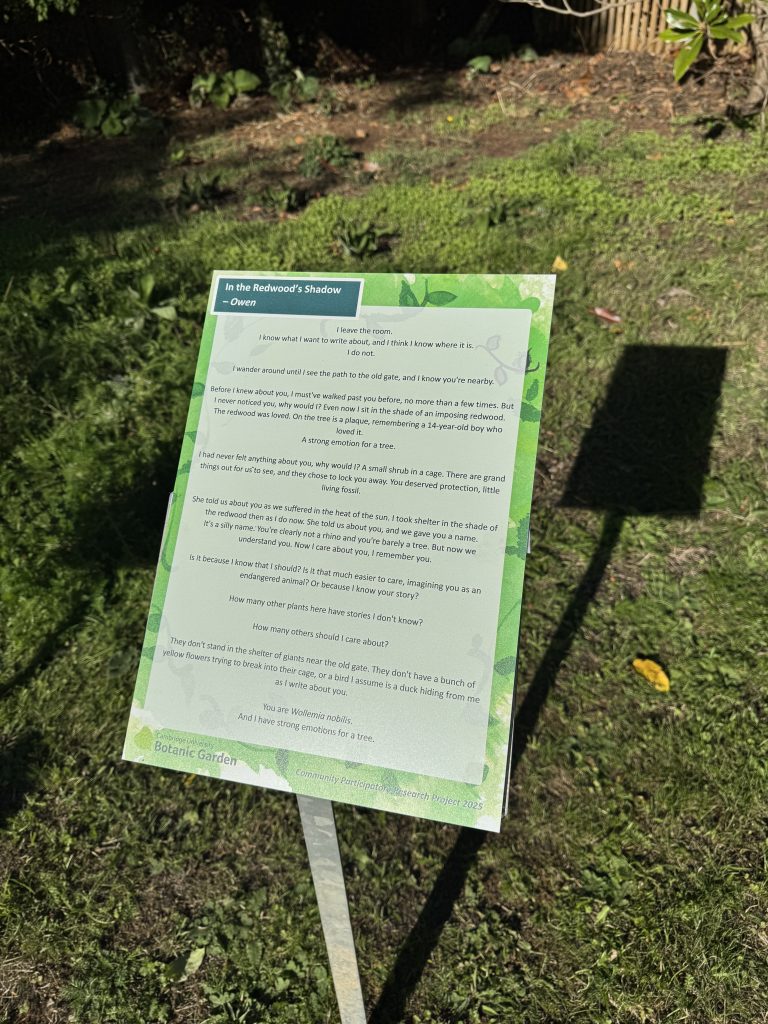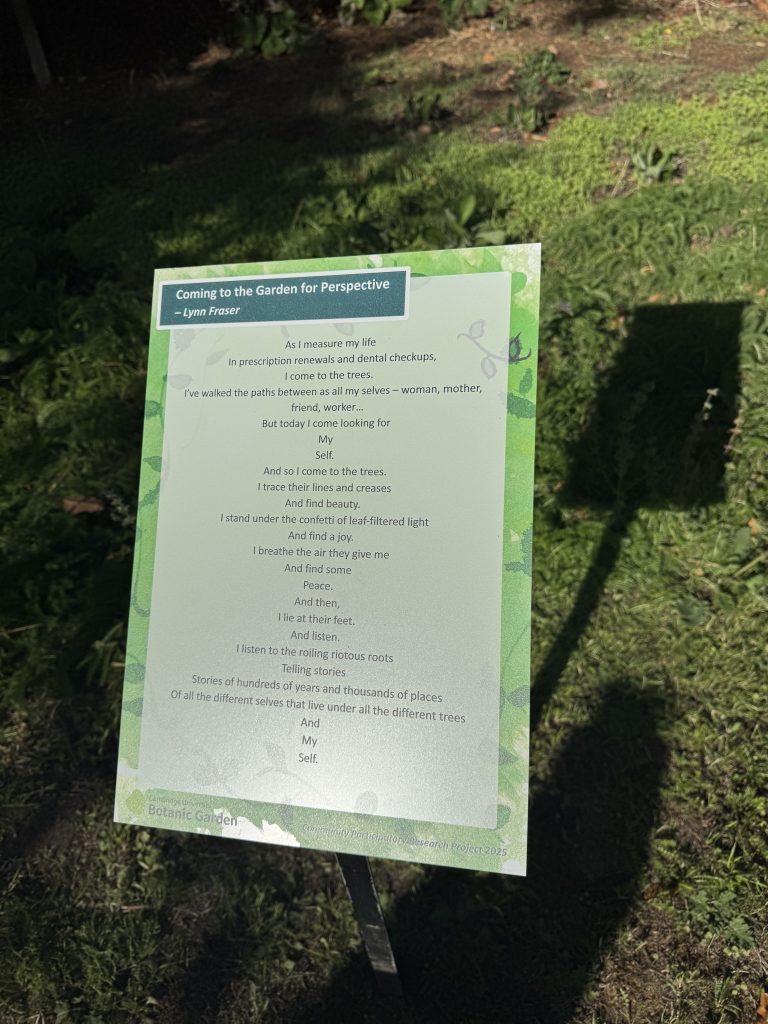As part of the community programme at CUBG, the Garden enlisted the help of 15 community members to understand their vision of the Garden and what the future of community spaces and engagement could look like.
Louise Campbell, Community Learning Co-ordinator at CUBG, said: “We are now two years into our community programme and rather than us imposing what we thought the community wanted, we had the opportunity to engage with our community visitors, for them to talk to us and share their experiences and sense of belonging.”
The project sought to empower community members as co-researchers, exploring their motivations, needs and aspirations in engaging with CUBG and actively involve them in shaping our future landscape.
“We have been brought in and more than listened to. I certainly feel that my relationship with the Garden has come from something that was quite slight – I brought my son here to run around in a safe place – to certainly developing to be both deeper and broader. I have a deeper understanding of the Garden, of what it is, how it works and why it is here and I have a greater appreciation for it.”
Funded by a Collections Connections Communities (CCC) UKRI research grant, the community participatory research was made up of 11 workshops, in which the community co-researchers worked collaboratively with CUBG staff to creatively explore their responses to the Garden.
From these sessions, a wonderfully illustrated map has been created that captures the five themes the co-researchers felt were most important to address in the Garden – social relevance and connection, communication, accessibility and inclusivity, wellbeing, and creativity. The question of belonging ran through all discussions, particularly how to create a sense of belonging in the Garden and how this can be communicated.
“It’s been amazing to engage in discussions with the co-researchers and understand what they want from the Garden. These have been beautifully captured with the help of artist Annabel Lee”, says Holly Clothier, Head of Learning at CUBG.
The map is on display in the picnic bench area next to the Schools’ Garden, along with poems written by co-researchers as part of the project. Visitors to the Garden are encouraged to look at the map, read the poems on display and share their reflections on belonging in the Garden.
Lynn Fraser of Sew Positive, one of the community groups involved in the project, said: “We have been brought in and more than listened to. I certainly feel that my relationship with the Garden has come from something that was quite slight – I brought my son here to run around in a safe place – to certainly developing to be both deeper and broader. I have a deeper understanding of the Garden, of what it is, how it works and why it is here and I have a greater appreciation for it.
“The team from the Garden have been so kind and welcoming to us and made it so easy for us to participate, to all speak openly and as ourselves.
“I really hope that some of our ideas are implemented because the group had so many brilliant ideas and it will be fantastic to see them come to life in the Garden.”
A formal report will be written to summarise the project’s approach and findings and the team will consider how to carry the project forward into the future works of the Garden.
Kathryn Westmore, Assistant Director at CUBG, said: “We are so grateful for the time, energy and dedication our co-researchers have brought to this project. Their work has been invaluable and has already made a meaningful difference. The impact of their contributions will continue to be felt well beyond the formal end of the project. We want to keep the conversation going, not just to share our progress, but to continue listening, learning and working together.”

